Entertainment
Tarek El Moussa’s Controversial L.A. Condo Project: Drama Explained on August 10, 2023 at 11:54 pm Us Weekly

Tarek El Moussa John Salangsang/Shutterstock
Tarek El Moussa made a name for himself for great work on HGTV’s Flip or Flop— but his latest condo project in Los Angeles is bringing more heat than applause.
El Moussa made headlines in August 2023 when news broke that he was allegedly evicting tenants from L.A.’s North Hollywood neighborhood for a $50 million development called NoHo 138. To make matters worse, El Moussa’s wife, Heather Rae El Moussa, is tied to the project.
Tarek’s investment company, TEM Capital, and Heather’s company, HEM Capital, are among the many partners working on the building. The couple, who tied the knot in October 2021, haven’t confirmed whether the construction will be featured on their joint HGTV series, Flipping El Moussas — but Tarek has denied any nefarious actions on their part during the building process.
“Even though I am being dragged for false accusations and misconceptions, my intentions are to do good, and I hope that we can focus on the positive and the facts,” he wrote in an August 2023 Instagram statement.
Scroll down to learn about the controversial build:
What Is the Project?
Tarek’s team announced in April 2023 that it would be developing a luxury condo complex in North Hollywood that investors could buy into. The Flipping 101 star confirmed the project the following month via Instagram.
“As someone who grew up in California, this is something that is really big to me!! @temcapital is so excited to tell you about my biggest flip yet — our new development project in North Hollywood!” Tarek captioned the clip. “This is 138 units and is a brand-new construction!!” He proceeded to speak to his followers directly, explaining that it’s an “incredible location” that he got “off market.”
The space will feature amenities such as a gym, rooftop deck, community pool and spacious balconies for each unit.
When Will Construction Begin?
The luxury complex is expected to break ground in 2024, according to the project’s website. Construction is expected to be complete in 2026.
How Many Units Will Be in the New Complex?
The building is slated to include 14 low-income units as part of the overall 138-unit location.
Why Is the Project Getting Backlash?
While Tarek was teasing the new venture in May 2023, news broke that the previous property owner, Arthur Aslanian, had used unsafe tactics to make tenants vacate the land. The landlord, who has since sold the land to Tarek, was convicted in federal court of hiring someone to set fire to vacant units on the site, according to The Los Angeles Times. The arson tactic was part of a “years-long illegal harassment campaign to force them to leave,” several tenants told the newspaper in an article published in August 2023.
The five remaining tenants claimed in the interview that Tarek and Heather, and their respective real estate investment firms, are allegedly evicting them from their rent-controlled units.
David Buchan/Shutterstock
What Has Tarek Said About the Controversy?
Tarek released a statement in August 2023 and denied that he or Heather were unlawfully evicting any residents from their homes. “Notices to the tenants were served by the current owner, not by me or the partners of NoHo 138. I am not evicting anyone. We did not issue the Ellis Act relocation documents,” he alleged.
Tarek cited the city of Los Angeles’ rules and regulations, claiming that everyone involved on the build have been following the guidelines. “The partners of NoHo 138 have attempted to get in touch with the remaining tenants to have an amicable discussion regarding final move out agreements. The partners of Noho 138 have also reached out to the attorney representing the Hartsook tenants to request assistance in facilitating a meeting between both parties,” he continued. “Our intentions are to work with the tenants to offer a great opportunity for them while helping to improve the neighborhood.”
The Tarek’s Flip Side star alleged that once his team formally acquired NoHo 138, they have had a goal to “construct a safe and pristine new apartment complex.” He noted that the project “will provide hundreds of new jobs through the construction process, provide a boost to city tax revenue which will be allocated for homeless programs and other socially impactful programs as promoted by the current city administration, create 131 new parking spaces to help reduce the impact of street parking, provide tenants an opportunity to come back and live in a newly constructed apartment, as well as create a beautiful new community to attract a diverse base of residents.”
Tarek concluded: “The entire process has been and will continue to be handled according to the law, and the existing tenants will continue to be treated respectfully and lawfully. I look forward to being a great addition and neighbor to the community.”
How Have Tenants Reacted to Tarek’s Statement?
Clare Letmon, an organizer and tenant of the Hartsook Street bungalows, told People in an August 2023 statement that Tarek “basically called us liars” when he claimed he was being “dragged for false accusations and misconceptions” in regard to the new complex. Letmon claimed that despite multiple attempts to speak with the El Moussas directly, Tarek hasn’t responded to the tenants since July 14, 2023.
“When you post videos standing in front of the arson damage, talking about the biggest flip of your life and this opportunity to make so much money, you’re exploiting the crimes that the landlord committed against the people who used to live here and you’re doing it with a smile on your face,” Letmon explained. “It would be incredibly heartbreaking to watch this place get bulldozed — and the trees, and the garden, and just the history that’s here.”
Earlier in the month, several tenants spoke with the L.A. Times about the possible eviction. “It’s been my home for 40 years,” Cathy Livas, who pays $824 a month to live in one of the units, told the outlet. “Why would I want to live anywhere else? Do you know the price of rents?”
Is Anything Tarek Doing Illegal?
Landlords have a right to legally “go out of business” and evict tenants whenever they see fit under the California Ellis Act, according to the Los Angeles House Department.
Tarek’s team insisted on the project website that “the entire process has been and will continue to be handled justly through the Los Angeles Housing Department (LAHD) and a legal relocation advisor in order to make 100 percent sure the relocation is performed according to the law.” The building group also noted that “monetary compensation” will be offered to tenants who wish to vacate their homes early.
Tarek El Moussa made a name for himself for great work on HGTV’s Flip or Flop— but his latest condo project in Los Angeles is bringing more heat than applause. El Moussa made headlines in August 2023 when news broke that he was allegedly evicting tenants from L.A.’s North Hollywood neighborhood for a $50 million
Us Weekly Read More
Advice
How Music Makes or Breaks Your Film
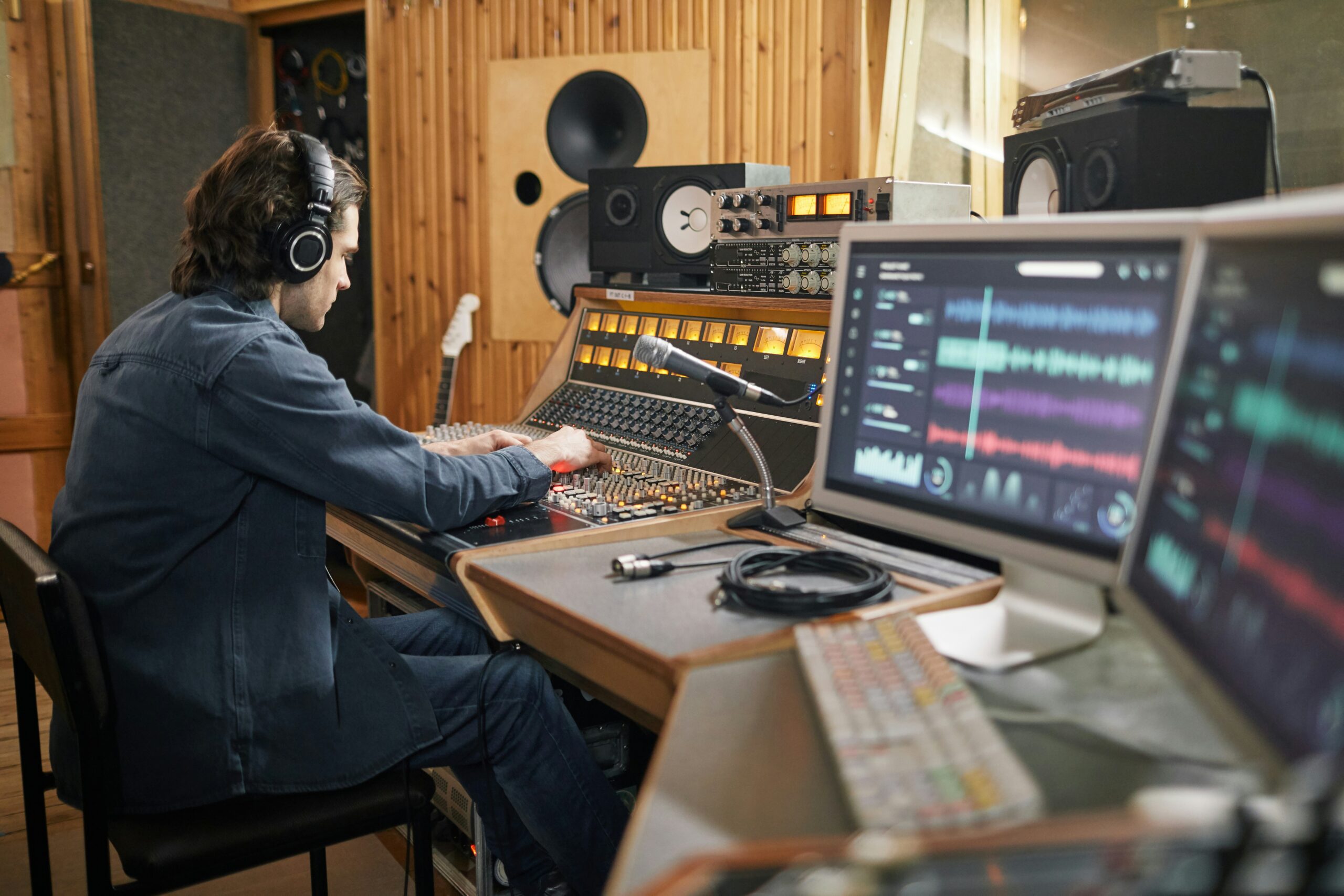
Music is one of the most powerful storytelling tools in a filmmaker’s arsenal. It can elevate a scene, transform emotions, and create a lasting impression that lingers with the audience long after the credits roll. A great score doesn’t just accompany a film—it becomes an inseparable part of the story, shaping its tone, amplifying its themes, and deepening its impact.
The Emotional Power of Music
Music has the ability to speak directly to our emotions, bypassing logic and touching something deeper. In film, this makes it an essential tool for setting the mood and intensifying emotional beats. A suspenseful score, like John Williams’ iconic theme in Jaws, can instill dread with just a few notes. Conversely, the whimsical melodies of La La Land lift viewers into a dreamlike state, reinforcing its themes of hope and passion.
Beyond overt moments, music often works in subtler ways. A minimalist score, as in Moonlight, can create introspection and vulnerability, pulling viewers closer to the characters’ inner worlds. When used effectively, music ensures the audience not only watches the story unfold but also feels every moment of it.
Motifs: Weaving Music Into the Story
One of the most effective ways to integrate music into a film is through motifs—recurring musical phrases associated with specific characters, ideas, or emotions. These motifs serve as auditory bookmarks that help the audience subconsciously connect with the narrative.
Think of the ominous “Imperial March” in Star Wars, which immediately signals Darth Vader’s presence and the looming threat of the Empire. Or the tender strains of the Shire theme in The Lord of the Rings, which evoke feelings of home and hope even during the darkest moments. By incorporating these musical threads, filmmakers can reinforce themes, foreshadow events, and enhance the audience’s emotional journey.

Tension, Release, and the Art of Silence
The ebb and flow of tension and release are vital to storytelling, and music plays a significant role in guiding these dynamics. A crescendo in a score, as seen in Inception’s high-stakes sequences, can heighten suspense, keeping viewers on the edge of their seats. Conversely, the absence of music, like in No Country for Old Men, can create an eerie stillness that draws attention to every sound and movement, amplifying the tension in unexpected ways.
Even unresolved chords or dissonant tones can evoke unease or anticipation, making them especially effective in horror or thriller genres. By manipulating musical tension, filmmakers can control the audience’s emotional experience, ensuring they remain engaged and invested in the story.
The Collaborative Magic of Filmmakers and Composers
A great score is often the result of a strong partnership between the filmmaker and the composer. This collaboration begins with open communication, as the filmmaker shares their vision, key themes, and emotional beats of the story. Temp tracks can provide a starting point, helping composers understand the desired mood. However, leaving room for creative interpretation allows composers to bring fresh ideas to the table.
Legendary partnerships, like that of Christopher Nolan and Hans Zimmer, showcase the magic that happens when filmmakers trust composers to experiment and push boundaries. Whether crafting groundbreaking soundscapes or refining classic motifs, these collaborations elevate films to new heights.
Scoring on a Budget: Creativity Over Cost
Independent filmmakers often face the challenge of creating a compelling score on limited budgets. Fortunately, great music doesn’t always require a big orchestra or a blockbuster budget. Platforms like Artlist and Epidemic Sound offer affordable, royalty-free tracks that can enhance a film’s mood. Local musicians or aspiring composers can also bring fresh, unique perspectives to a project, often at a fraction of traditional costs.
For those willing to experiment, tools like GarageBand or Logic Pro enable filmmakers to create simple yet effective tracks. With creativity and resourcefulness, even the smallest production can achieve a cinematic sound.
Conclusion: Crafting a Cinematic Symphony
The power of a film’s score lies in its ability to transcend the screen and connect with the audience on an emotional level. Music shapes the way we perceive a story, infusing each scene with mood, tension, and meaning. It underscores the triumphs, tragedies, and transformations that define the cinematic experience.
For filmmakers, understanding the role of music isn’t just about enhancing individual moments—it’s about crafting a cohesive emotional journey. The right score can unify a film’s visual and narrative elements, making them resonate as one. Whether you’re working with a world-class composer or creating tracks on your laptop, your film’s music should serve the story, amplify its themes, and leave a lasting impression.
Music is more than just sound; it’s a partner in storytelling, a silent narrator that speaks volumes. By embracing its potential, filmmakers can create not just memorable scenes but unforgettable experiences that linger in the hearts of their audiences.
Bolanle Media is excited to announce our partnership with The Newbie Film Academy to offer comprehensive courses designed specifically for aspiring screenwriters. Whether you’re just starting out or looking to enhance your skills, our resources will provide you with the tools and knowledge needed to succeed in the competitive world of screenwriting. Join us today to unlock your creative potential and take your first steps toward crafting compelling stories that resonate with audiences. Let’s turn your ideas into impactful scripts together!
Advice
How Color Shapes Film Mood and Tone

Color is a powerful storytelling tool in filmmaking. It shapes a film’s tone, influences emotions, and enhances visual storytelling. By understanding color theory and symbolism, filmmakers can craft compelling narratives that resonate with their audience on a deeper level.
1. The Basics of Color Theory in Film
At its core, color theory helps filmmakers choose and combine colors to achieve specific effects.
- Primary Colors: Red, blue, and yellow are the building blocks of all colors.
- Color Harmony: Complementary (opposites on the color wheel) and analogous (adjacent colors) schemes create visual balance or tension.
- Warm vs. Cool Colors: Warm tones (red, orange, yellow) evoke energy and passion, while cool tones (blue, green, purple) create calmness or melancholy.
Understanding these basics allows filmmakers to design palettes that support their story’s emotional arc.
2. Setting the Tone with Color Palettes
A film’s color palette sets the mood and reinforces its themes.
- Monochromatic Schemes: Using shades of a single color can create a minimalist and cohesive look, as seen in Moonlight.
- Contrasting Colors: Films like Amélie use vibrant contrasts to highlight whimsy and vibrancy.
- Muted Tones: Desaturated colors in The Road evoke despair and a bleak post-apocalyptic world.
Choosing the right palette ensures the audience feels the intended emotions without overt exposition.
3. The Emotional Language of Colors
Colors evoke specific emotions and associations, making them essential for visual storytelling.
- Red: Passion, danger, or power (Schindler’s List: The girl in the red coat).
- Blue: Sadness, serenity, or isolation (Her: Melancholy longing).
- Yellow: Joy, caution, or decay (Breaking Bad: The descent into moral chaos).
- Green: Growth, envy, or the unnatural (The Matrix: A digital world).
Consider your story’s themes when assigning symbolic meanings to colors.
4. Practical Tips for Using Color on a Budget
Big budgets aren’t required to use color effectively.
- Lighting: Experiment with gels and filters to alter light color.
- Costume and Set Design: Coordinate wardrobe and props to align with your palette.
- Post-Production: Use color grading software to fine-tune tones and hues.
Indie filmmakers can create visually stunning projects by focusing on intentional color choices during pre-production.
5. Famous Examples of Color in Film
Learn from cinematic classics that masterfully use color:
- The Grand Budapest Hotel: Wes Anderson’s pastel hues create a whimsical, nostalgic world.
- The Godfather: Golden tones symbolize power and corruption.
- Black Panther: Vibrant colors celebrate African culture and Wakanda’s identity.
Analyze these examples to inspire your own projects.
Conclusion
Color is more than a visual element—it’s a storytelling powerhouse. By understanding its emotional impact and mastering its practical application, filmmakers can elevate their craft. Whether you’re working on a blockbuster or an indie film, thoughtful color choices can make your story unforgettable.
Bolanle Media is excited to announce our partnership with The Newbie Film Academy to offer comprehensive courses designed specifically for aspiring screenwriters. Whether you’re just starting out or looking to enhance your skills, our resources will provide you with the tools and knowledge needed to succeed in the competitive world of screenwriting. Join us today to unlock your creative potential and take your first steps toward crafting compelling stories that resonate with audiences. Let’s turn your ideas into impactful scripts together!
Entertainment
What Chris Tucker and Jackie Chan Teach Us About On-Screen Chemistry

The on-screen chemistry between Chris Tucker and Jackie Chan exemplifies how two distinct personalities can create cinematic magic. Their collaboration in the Rush Hour series not only brought laughter and excitement to audiences but also showcased a unique blend of comedic timing, physicality, and cultural differences. This article explores the elements that contribute to their chemistry, the impact of their partnership on the action-comedy genre, and the valuable lessons we can learn from their dynamic.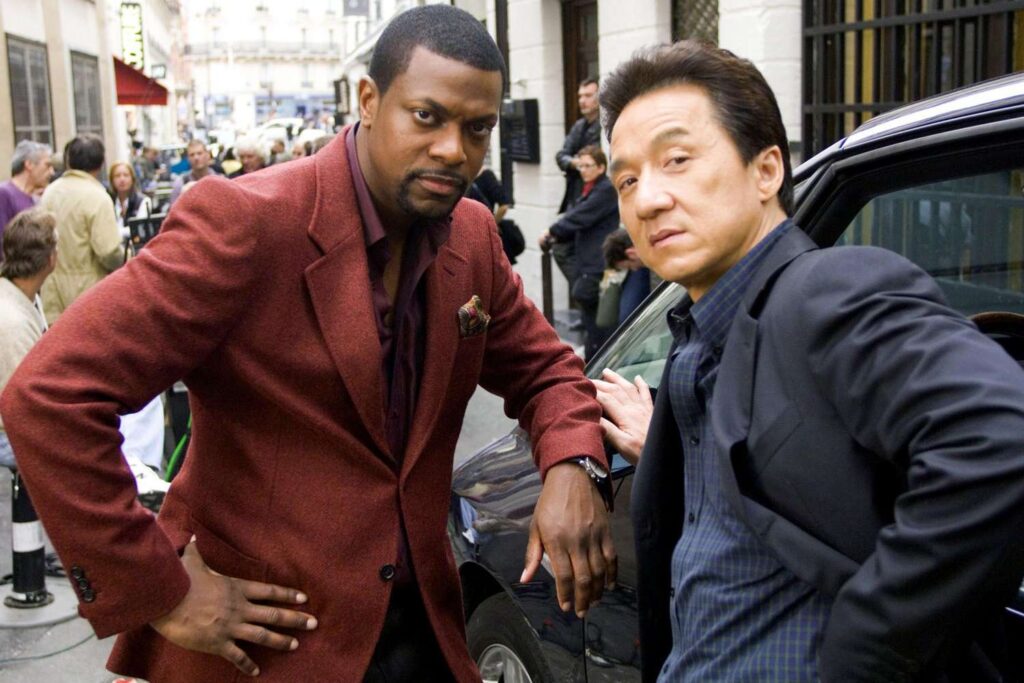
Contrasting Styles
A key aspect of Tucker and Chan’s chemistry is their contrasting styles. Jackie Chan is renowned for his martial arts skills and physical comedy, while Chris Tucker brings a high-energy comedic flair characterized by rapid-fire dialogue. This combination creates a delightful balance that keeps audiences engaged, as viewers enjoy the interplay between Chan’s action sequences and Tucker’s humor.
Cultural Exchange
Their films often explore themes of cultural exchange, with Tucker representing an American perspective and Chan embodying a traditional Chinese approach. This cultural juxtaposition leads to humorous misunderstandings and witty banter that resonate with diverse audiences. By navigating these differences, Tucker and Chan not only entertain but also educate viewers about the richness of their respective cultures.
Improvisation and Playfulness
Both actors are known for their improvisational skills, which significantly enhance their on-screen chemistry. Their willingness to play off each other’s energy allows for spontaneous moments that feel genuine and entertaining. This improvisation shines in scenes where Tucker’s quick wit meets Chan’s physical comedy, resulting in memorable exchanges.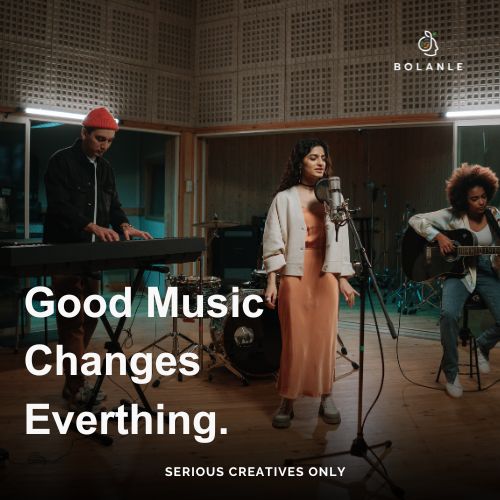
Impact on the Action-Comedy Genre
The success of the Rush Hour series revolutionized the action-comedy genre, paving the way for future collaborations between actors from different backgrounds. The blend of action-packed sequences with comedic elements became a formula that many filmmakers sought to replicate. Tucker and Chan’s chemistry not only entertained audiences but also demonstrated that diverse partnerships could lead to creative storytelling.
Lessons Learned from Their Dynamic
- Embrace Differences: Embracing contrasting styles can enrich storytelling.
- Prioritize Chemistry: Building rapport among actors is essential for engaging narratives.
- Encourage Improvisation: Allowing room for improvisation enhances both humor and emotional depth.
- Highlight Cultural Nuances: Thoughtfully exploring cultural differences resonates with audiences.

Conclusion
Chris Tucker and Jackie Chan’s chemistry is a testament to the power of collaboration in film. Their contrasting styles, cultural exchanges, and improvisational skills create a unique dynamic that resonates with viewers worldwide. By examining what makes their partnership special, filmmakers can gain valuable insights into crafting memorable cinematic experiences that leave lasting impressions on audiences long after the credits roll.
Bolanle Media is excited to announce our partnership with The Newbie Film Academy to offer comprehensive courses designed specifically for aspiring screenwriters. Whether you’re just starting out or looking to enhance your skills, our resources will provide you with the tools and knowledge needed to succeed in the competitive world of screenwriting. Join us today to unlock your creative potential and take your first steps toward crafting compelling stories that resonate with audiences. Let’s turn your ideas into impactful scripts together!
-
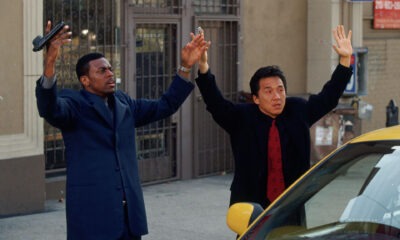
 Entertainment2 days ago
Entertainment2 days agoWhat Chris Tucker and Jackie Chan Teach Us About On-Screen Chemistry
-

 Advice6 days ago
Advice6 days agoThe Impact of Music on Film Pacing
-

 Advice1 week ago
Advice1 week agoMaster the Art of Film Casting
-

 Advice1 week ago
Advice1 week agoHow to Create Unforgettable Movie Scenes
-

 Advice3 weeks ago
Advice3 weeks agoA Reality Check for Aspiring Filmmakers
-

 Advice1 week ago
Advice1 week agoReinventing Genres: Tips for Filmmakers
-
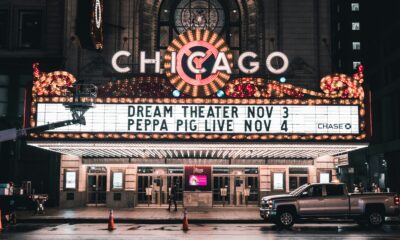
 Advice1 week ago
Advice1 week agoScreenwriting Tips for Aspiring Filmmakers
-

 Advice4 weeks ago
Advice4 weeks agoMastering Pacing for Compelling Storytelling








